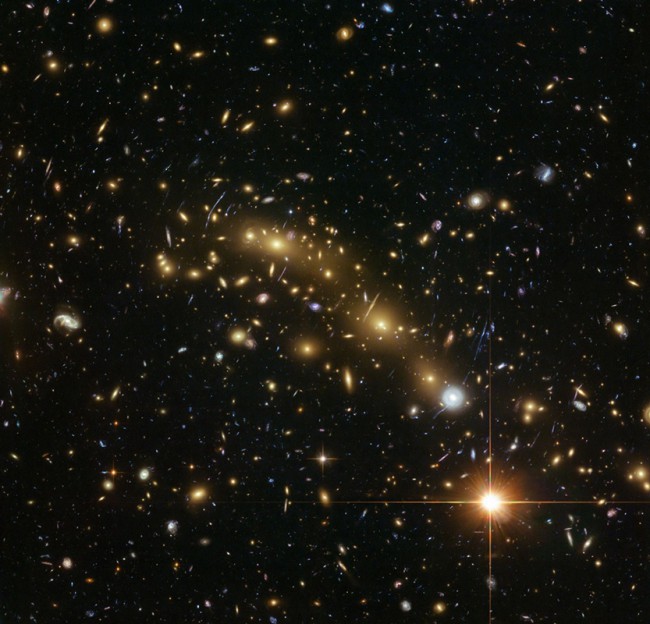Created using observations from Hubble’s Frontier Fields observing program, the map shows the amount and distribution of mass within MCS J0416.1–2403.
By Hubble ESA, Garching, Germany | Published: Thursday, July 24, 2014
Astronomers using the NASA/ESA Hubble Space Telescope have mapped the mass within a galaxy cluster more precisely than ever before. Created using observations from Hubble’s Frontier Fields observing program, the map shows the amount and distribution of mass within MCS J0416.1–2403, a massive galaxy cluster found to be 160 trillion times the mass of the Sun. The detail in this mass map was made possible thanks to the unprecedented depth of data provided by new Hubble observations and the cosmic phenomenon known as strong gravitational lensing.
Measuring the amount and distribution of mass within distant objects in the universe can be very difficult. A trick often used by astronomers is to explore the contents of large clusters of galaxies by studying the gravitational effects they have on the light from distant objects beyond them. This is one of the main goals of Hubble’s Frontier Fields, an ambitious observing program scanning six different galaxy clusters, including MCS J0416.1-2403, the cluster shown in this stunning new image.
Large clumps of mass in the universe warp and distort the space-time around them. Acting like lenses, they appear to magnify and bend light that travels through them from more distant objects.
Despite their large masses, the effect of galaxy clusters on their surroundings is usually quite minimal. For the most part, they cause what is known as weak lensing, making even more distant sources appear as only slightly more elliptical or smeared across the sky. However, when the cluster is large and dense enough and the alignment of cluster and distant object is just right, the effects can be more dramatic. The images of normal galaxies can be transformed into rings and sweeping arcs of light, even appearing several times within the same image. This effect is known as strong lensing, and it is this phenomenon, seen around the six galaxy clusters targeted by the Frontier Fields program, that has been used to map the mass distribution of MCS J0416.1-2403 using the new Hubble data.

